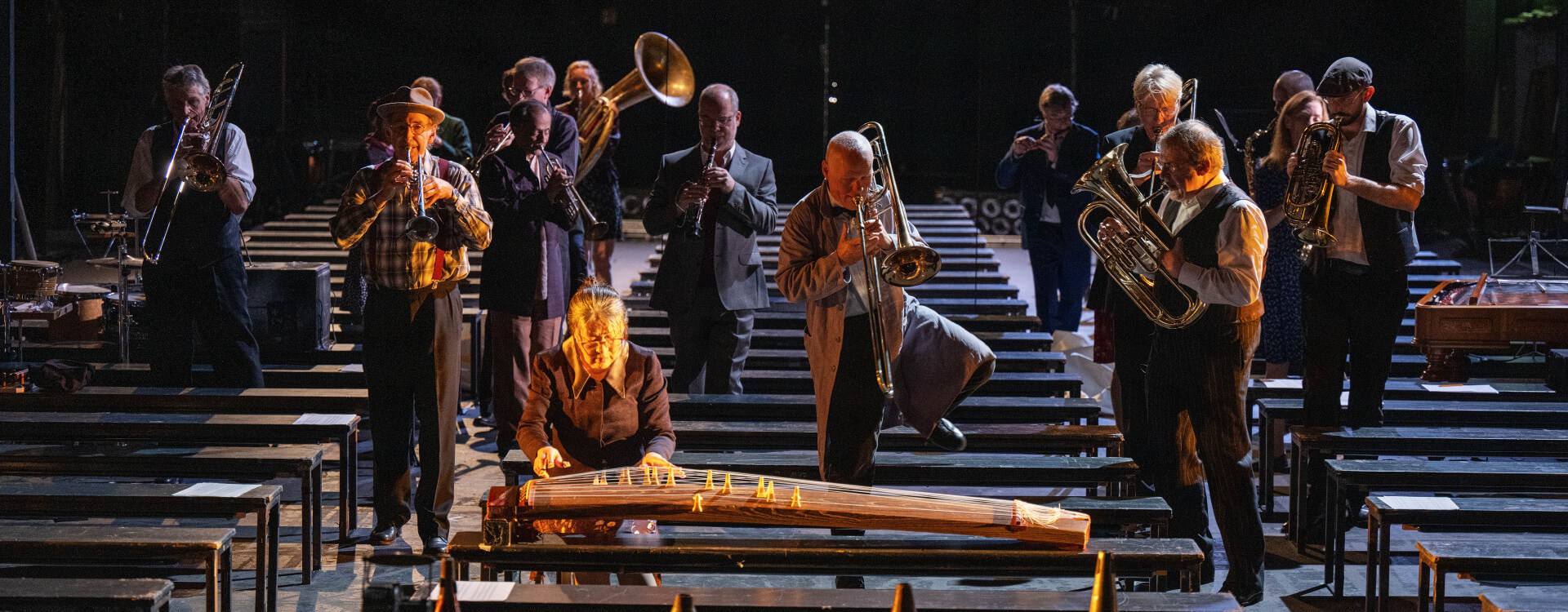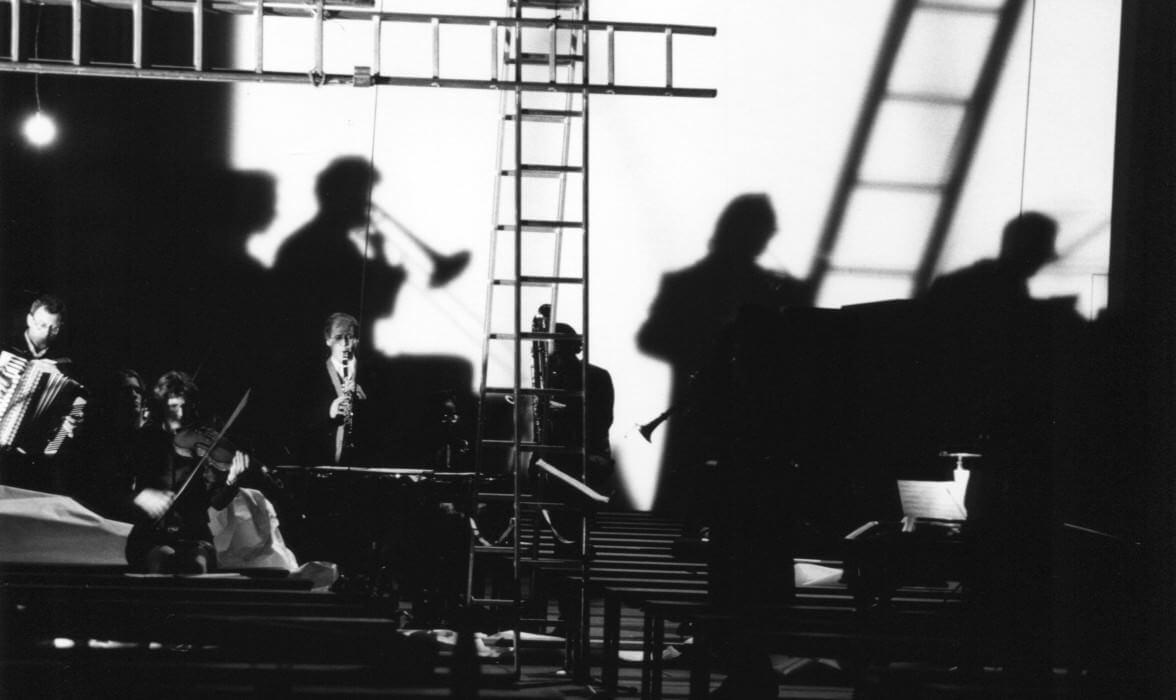Schwarz auf Weiß
Musiktheaterwerk von Heiner GoebbelsThe Frankfurt-based composer and director Heiner Goebbels seems to have written his musical theatre piece ›Schwarz auf Weiss‹ (Black on White) especially for the Ensemble Modern. The protagonist is the collective of the Ensemble itself. The musicians act simultaneously as presenters and musicians, conquering the stage. Tennis balls bounce onto a large drum, gentle koto sounds can be heard, a kettle hisses to a complex flute melody. The musicians do not only play their own instruments but also group together to form a wind ensemble for example, arousing associations with an Italian banda. The scenes and events of the piece follow on from one another without interruption and the lighting, ingeniously created by Jean Kalman, produces its own dramaturgy. Again and again we hear a recording of Heiner Müller's voice reading Edgar Allan Poe's ›Shadow - A Parable‹.
›Schwarz auf Weiss‹ is, after all, a reflection on writing and the absent author as an image of a collective memory. For Goebbels, the work is »a kind of farewell to Heiner Müller« – but one that is full of humour, lightness and charm.
Ensemble Modern demonstrates a phenomenal versatility in ›Schwarz auf Weiss‹. Not only is every player a virtuoso of his own instrument, but ever so often the strings courageously take up the brass instruments, and the winds might pick up a violin in turn.Die Rheinpfalz, nl
The stage begins to fill with musicians, who play checkers on a harpsichord lid or throw tennis balls at a bass drum, when they're not reading lines from Poe and Eliot or laying down bursts of atonal jazz.The New Yorker
Few contemporary ensembles, which by their nature are inclined to experiment, could have come across so effectively as both abstract musicians and onstage personalities.The Star-Ledger, Willia J. Conrad
Tennis balls are thrown at a percussive thunder wall. A metal pin lowered from the fly-space gently caresses the strings of a koto, the Japanese »zither«.Der Standard, Heidemarie Klabacher
Four years down the road, ›Black on White‹ has lost nothing of its power to dazzle, amaze and inspire awe. If you ever have the chance to see this remarkable work, don't miss it. It is a masterpiece.Sequenza/21, Duane Harper Grant
The backbone of this motley score is jazz, all kinds of jazz: the jagged, glassy rhythms of be-bop, the baroque frenzy of Ornette Coleman, the stately quiver of a New Orleans funeral. But Goebbels drapes a great many other sources on that solid frame.Newsday, Justin Davidson
The music is equally kinetic, and creates the illusion of driving the action on the stage, although both sound and vision are entirely abstract.The New York Times, Allan Kozinn
For myself, I still have no idea of what this masterpiece of madness is all about, but I had one hell of a good time, and, frankly, I don't give a damn. I'd just love to experience it again.Chelsea Clinton News, Bill Zakariasen
The true "star" of Black on White is the Ensemble Modern. They were involved in the creation of this piece, and it shows in things aside from their musicianship such as oboist Catherine Milliken's ferocious, sexy delivery of T. S. Eliot and violist Susan Knight's impressive throwing arm.andante.com, Daniel Felsenfeld
The players of Frankfurt's Ensemble Modern had to navigate a stage filled with lines of benches and play complex musical motifs in different configurations and facing in different directions, often without a conductor.Wall Street Journal

